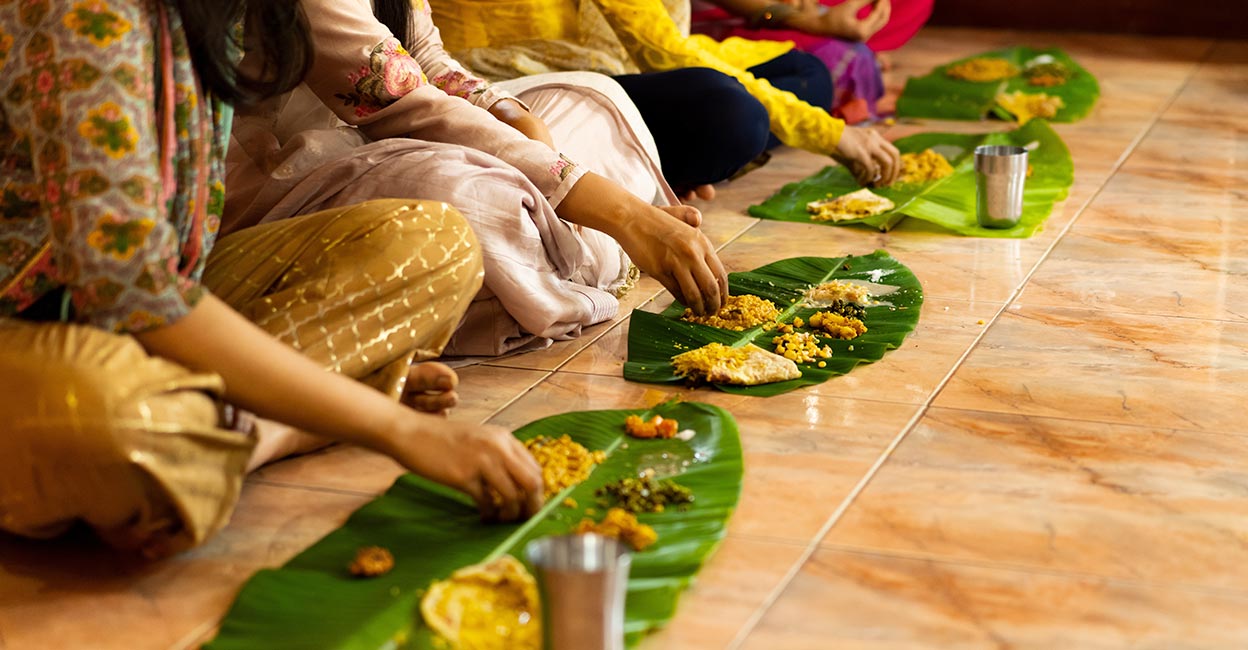Truth about Kerala sadya: Balanced meal or calorie overload?
Mail This Article
The traditional Kerala sadya, served on a vibrant green banana leaf, evokes deep nostalgia among Malayalis. The thought of hot rice with parippu, a dollop of ghee, and a pinch of salt fills every Malayali with pride. This grand vegetarian feast is often hailed as a perfectly balanced meal, deeply rooted in the state's culinary heritage. However, experts now question whether the sadya meets modern dietary needs or requires a nutritional makeover.
At a recent event organised by the Kerala Food Safety Department, Dr TS Anish, professor of community medicine at Kozhikode Medical College, challenged the common belief that sadya is a well-balanced meal. He pointed out that the meal—comprising rice, thoran, pachadi, kichadi, parippu, ghee, banana chips, sarkkara varatti, pappadam, sambharam, sambar, pulissery, and payasam—may not be as healthy as widely assumed.
"The Kerala sadya has excess calories, and its protein content is much lower than required. The micronutrient distribution is also inadequate, especially in traditional vegetarian sadyas," Dr Anish said in an interview with Onmanorama's News Brake podcast.
"One of the major issues with sadya is portion size. A typical meal includes a large serving of white rice, multiple sweet dishes, and relatively small portions of side dishes. This imbalance leads to excessive carbohydrate intake, often causing drowsiness. A single sadya can contribute to 70–80% of an individual’s daily calorie requirement,” he added.
Dr Mumtaz Khalid Ismail, a consultant clinical dietitian at Rainbow Polyclinic and Total Nutrition Plus, echoed similar concerns. "A full Kerala sadya provides approximately 1,880 calories in a single meal, equivalent to an entire day’s recommended calorie intake. This is its biggest drawback," she noted.
Sadya is particularly energy-dense due to ghee, coconut-based preparations, and fried items such as banana chips and pappadam. These significantly increase saturated fat intake, with a single sadya containing around 94 grams of fat—an alarmingly high amount. While the meal is a good source of fibre, its high proportion of white rice, which has a high glycaemic index, can cause blood sugar spikes.

Nutritional gaps in sadya
Another concern raised by Dr Anish is the lack of essential micronutrients in a vegetarian sadya.
"Some micronutrients are exclusive to animal-based foods, while others are found only in plant-based foods. Non-vegetarians consume both sources, reducing the risk of deficiencies. Vegetarians may lack certain nutrients, particularly vitamin B12, which is found only in animal-derived foods. While high-calorie components are served in large portions, nutrient-rich dishes are given in much smaller quantities," he explained.
However, Dr Mumtaz highlighted that certain elements of sadya, like buttermilk, offer probiotic benefits and are rich in calcium, protein, and vitamin B12, aiding digestion.
Evolution of sadya
The Kerala sadya in its current form is not as ancient as commonly believed. Dr Anish pointed out that it has undergone significant changes over the last 50 years. For instance, sambar was introduced from Andhra Pradesh and Tamil Nadu, while traditional root vegetables like yam and colocasia—lower in glycaemic index—have been replaced by tapioca, which has a much higher glycaemic index.
Another major issue is the increased use of refined carbohydrates. Many payasam varieties are now made with maida (refined flour), significantly raising their sugar content. Vermicelli payasam, for example, contains maida, and in southern Kerala, especially in Thiruvananthapuram, it is often paired with boli, another refined flour-based dish. Additionally, the number of deep-fried and heavily sweetened items has increased, making sadya even more energy-dense.

How to make sadya healthier
Despite these concerns, Dr Mumtaz suggests simple adjustments to make Kerala sadya healthier:
1. Replace white rice: Opt for parboiled long-grain rice, little millet, or quinoa for a more nutrient-dense alternative. Parboiled rice retains more micronutrients and reduces calorie intake.
2. Increase protein intake: Incorporate more legume-based dishes, such as green gram (payar) and black chickpeas (kadala), especially in sprouted forms, to improve the meal’s macronutrient balance.
3. Reduce fried and sugary items: Limit banana chips, pappadam, and fried snacks. Cut down on added sugar and jaggery in payasam and reduce servings from two or three to just one. And forget the payasam-boli combo.
These adjustments allow sadya to retain its traditional essence while becoming a healthier and more balanced meal.


